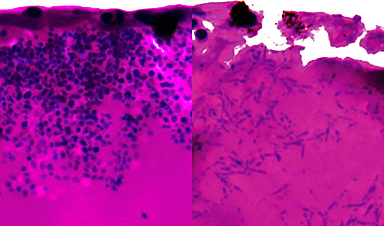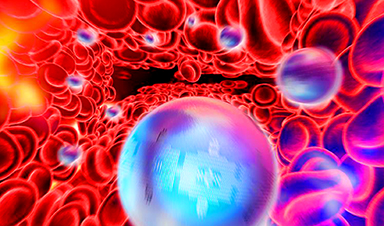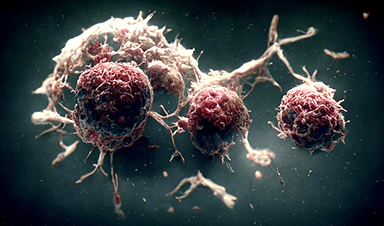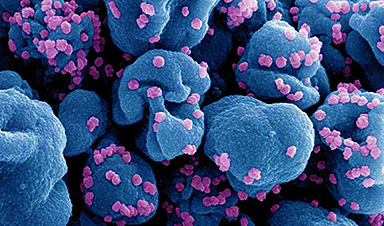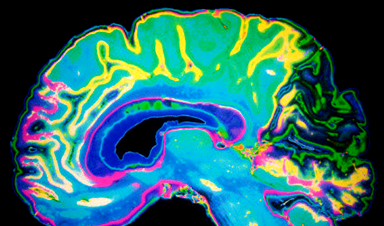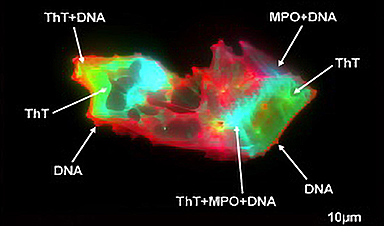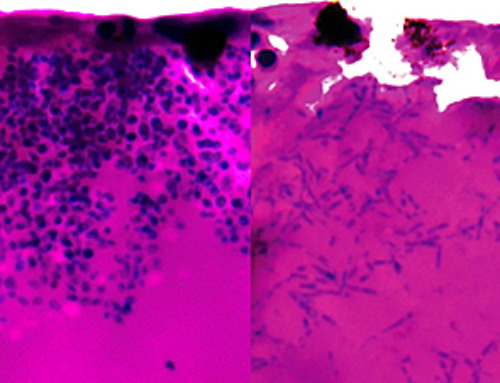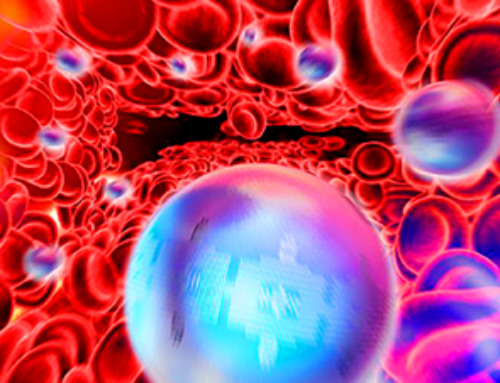Conventional cancer therapies risk causing damage to healthy tissue while working to destroy cancer cells. Researchers are developing novel therapeutics based on nanotechnology to overcome this limitation, as well as to improve the pharmacokinetics of a pharmaceutical and reduce the related toxicities (Nat Rev Drug Discov 2021; https://doi.org/10.1038/s41573-020-0090-8).
Another encouraging area of nanotechnology in oncology is its use in enhancing immunotherapy (Nanoscale 2019; doi: 10.1039/c9nr05371a). T cells are important fighters in an immune response, and T cell-based immunotherapy of cancer is a rapidly developing field. While immunotherapy has already been established as an exciting and potentially highly effective treatment option for various types of cancer, one important challenge remains—stimulate antitumor immunity of primary T cells in vivo.
To tackle this issue, scientists at Ohio State University developed nanotechnology to boost activation of T cells at the cancer tumor site in a way that improved their interactions with an antibody therapy undergoing clinical trial testing. The study, which was conducted in mouse models of cancer, was published in the journal Nature Communications (2021; https://doi.org/10.1038/s41467-021-27434-x).
The research was led by the Dong lab, which has long focused on nanoparticle delivery of messenger RNA (mRNA) as a therapeutic strategy. In the current study, the team hypothesized that delivery of costimulatory receptor mRNA to tumor-infiltrating T cells would enhance the antitumor effects of antibodies while lowering the chances for whole-body side effects.
To explore nanoparticles for delivering mRNA into T cells, the investigators designed and synthesized a library of phospholipid and glycolipid derivatives (PLs and GLs) and used these materials to devise biomimetic nanoparticles for mRNA delivery. The team chose to utilize the phospholipid-derived nanoparticle, PL1, to deliver the costimulatory receptor mRNA.
Next, the researchers loaded the nanoparticle cargo: (mRNA) carrying instructions to produce molecules that T cells express as part of their immune system function. The researchers injected these nanoparticles directly into the tumor site in mouse models of specific cancers, which entered tumor-infiltrating T cells to generate and amplify specific receptors on their surfaces enabling additional functions, including proliferation, recruitment of other immune cells, and production of helpful proteins.
The team waited 6 hours until the cells produced enough receptors and then injected antibodies into the tumors. The combination of PL1-OX40 mRNA and anti-OX40 antibody demonstrated significantly improved antitumor activity compared to anti-OX40 antibody alone in multiple tumor models. Tests of the combined treatment regimen produced the best results in mouse models of melanoma and B-cell lymphoma. Experimental monoclonal antibodies delivered 6 hours later could then bind to those receptors on T cells which triggered their cancer cell-killing functions. The nanoparticle and antibody delivery eliminated tumors in 60 percent of the mice—a significantly better outcome than treatment with the antibody alone. Moreover, the immune response enhancement had a lasting effect: lymphoma cells injected later into the treated tumor-free mice were unable to survive long enough to form tumors.
The new nanotechnology was effective in melanoma as well. When the team supplemented the combination treatment with the two additional antibodies that disrupt cancer cells’ ability to block the immune response, the approach resulted in a 50 percent complete response in the mice and protection against a later tumor rechallenge.
Oncology Times reached out to senior author, Yizhou Dong, PhD, for additional insights into their study. Dong is Associate Professor in the Division of Pharmaceutics and Pharmacology of the College of Pharmacy at The Ohio State University. His research focuses on the design and development of biotechnology platforms for the treatment of genetic disorders, infectious diseases, and cancers.
Oncology Times: A great number of nanoformulations have been reported as drug delivery systems to be applied in cancer treatment. What was the rationale for the design of this system?
Dong: “Phospholipids and glycolipids are natural components of the cell membrane. Taking advantage of this unique characteristic of these two types of lipids, we designed a library of phospholipid and glycolipid biomimetic materials (PL and GL lipids) to improve mRNA delivery. These PL and GL lipids are composed of a biomimetic head (phosphate head or glyco head), an ionizable amino core, and multiple hydrophobic tails. Their ionizable property makes them neutral at physiological pH and becomes positively charged at low pH.”
Oncology Times: What were some of the factors which posed challenges in the development of the nanoparticle delivery system of messenger RNA? What strategies were employed to surmount these challenges?
Dong: “Effective and safe delivery of mRNA remains the key challenge for clinical translation of nanoparticle formulations. We mimic nature using chemical structures such as phospholipid, glycolipid, and many other molecules from mammalian cells. By systematic exploration and optimization of the formulations, we can match delivery systems with therapeutic indications.”
Oncology Times: What are the potential clinical implications of the findings of this study?
Dong: “In this work, we developed a phospholipid-derived nanoparticle to deliver OX40 or CD137 mRNA to T cells in the tumor microenvironment, which enhances the efficacy of agonistic antibody therapy in preclinical tumor models. This treatment strategy is compatible with multiple administration routes and works in synergy with checkpoint inhibitors, demonstrating the broad applicability of this treatment regimen under diverse therapeutic situations. Additionally, the results lay a solid foundation for the exploration of more effective combinations using costimulatory receptors and agonistic antibodies for cancer immunotherapy.”
Oncology Times: Nanotechnology targets cancer cells more exactly to spare healthy tissues. Are there any possible side effects of nanotechnology for cancer?
Dong: “Many strategies have been investigated to improve the targeting efficiency of cancer cells. Different from direct targeting cancer cells, we aim to modulate T cells in the tumor microenvironment using nanoparticles delivering mRNA encoding costimulatory receptors in combination with the corresponding agonistic antibody as a strategy to enhance cancer immunotherapy.”
News
AI Helped Scientists Stop a Virus With One Tiny Change
Using AI, researchers identified one tiny molecular interaction that viruses need to infect cells. Disrupting it stopped the virus before infection could begin. Washington State University scientists have uncovered a method to interfere with a key [...]
Deadly Hospital Fungus May Finally Have a Weakness
A deadly, drug-resistant hospital fungus may finally have a weakness—and scientists think they’ve found it. Researchers have identified a genetic process that could open the door to new treatments for a dangerous fungal infection [...]
Fever-Proof Bird Flu Variant Could Fuel the Next Pandemic
Bird flu viruses present a significant risk to humans because they can continue replicating at temperatures higher than a typical fever. Fever is one of the body’s main tools for slowing or stopping viral [...]
What could the future of nanoscience look like?
Society has a lot to thank for nanoscience. From improved health monitoring to reducing the size of electronics, scientists’ ability to delve deeper and better understand chemistry at the nanoscale has opened up numerous [...]
Scientists Melt Cancer’s Hidden “Power Hubs” and Stop Tumor Growth
Researchers discovered that in a rare kidney cancer, RNA builds droplet-like hubs that act as growth control centers inside tumor cells. By engineering a molecular switch to dissolve these hubs, they were able to halt cancer [...]
Platelet-inspired nanoparticles could improve treatment of inflammatory diseases
Scientists have developed platelet-inspired nanoparticles that deliver anti-inflammatory drugs directly to brain-computer interface implants, doubling their effectiveness. Scientists have found a way to improve the performance of brain-computer interface (BCI) electrodes by delivering anti-inflammatory drugs directly [...]
After 150 years, a new chapter in cancer therapy is finally beginning
For decades, researchers have been looking for ways to destroy cancer cells in a targeted manner without further weakening the body. But for many patients whose immune system is severely impaired by chemotherapy or radiation, [...]
Older chemical libraries show promise for fighting resistant strains of COVID-19 virus
SARS‑CoV‑2, the virus that causes COVID-19, continues to mutate, with some newer strains becoming less responsive to current antiviral treatments like Paxlovid. Now, University of California San Diego scientists and an international team of [...]
Lower doses of immunotherapy for skin cancer give better results, study suggests
According to a new study, lower doses of approved immunotherapy for malignant melanoma can give better results against tumors, while reducing side effects. This is reported by researchers at Karolinska Institutet in the Journal of the National [...]
Researchers highlight five pathways through which microplastics can harm the brain
Microplastics could be fueling neurodegenerative diseases like Alzheimer's and Parkinson's, with a new study highlighting five ways microplastics can trigger inflammation and damage in the brain. More than 57 million people live with dementia, [...]
Tiny Metal Nanodots Obliterate Cancer Cells While Largely Sparing Healthy Tissue
Scientists have developed tiny metal-oxide particles that push cancer cells past their stress limits while sparing healthy tissue. An international team led by RMIT University has developed tiny particles called nanodots, crafted from a metallic compound, [...]
Gold Nanoclusters Could Supercharge Quantum Computers
Researchers found that gold “super atoms” can behave like the atoms in top-tier quantum systems—only far easier to scale. These tiny clusters can be customized at the molecular level, offering a powerful, tunable foundation [...]
A single shot of HPV vaccine may be enough to fight cervical cancer, study finds
WASHINGTON -- A single HPV vaccination appears just as effective as two doses at preventing the viral infection that causes cervical cancer, researchers reported Wednesday. HPV, or human papillomavirus, is very common and spread [...]
New technique overcomes technological barrier in 3D brain imaging
Scientists at the Swiss Light Source SLS have succeeded in mapping a piece of brain tissue in 3D at unprecedented resolution using X-rays, non-destructively. The breakthrough overcomes a long-standing technological barrier that had limited [...]
Scientists Uncover Hidden Blood Pattern in Long COVID
Researchers found persistent microclot and NET structures in Long COVID blood that may explain long-lasting symptoms. Researchers examining Long COVID have identified a structural connection between circulating microclots and neutrophil extracellular traps (NETs). The [...]
This Cellular Trick Helps Cancer Spread, but Could Also Stop It
Groups of normal cbiells can sense far into their surroundings, helping explain cancer cell migration. Understanding this ability could lead to new ways to limit tumor spread. The tale of the princess and the [...]


